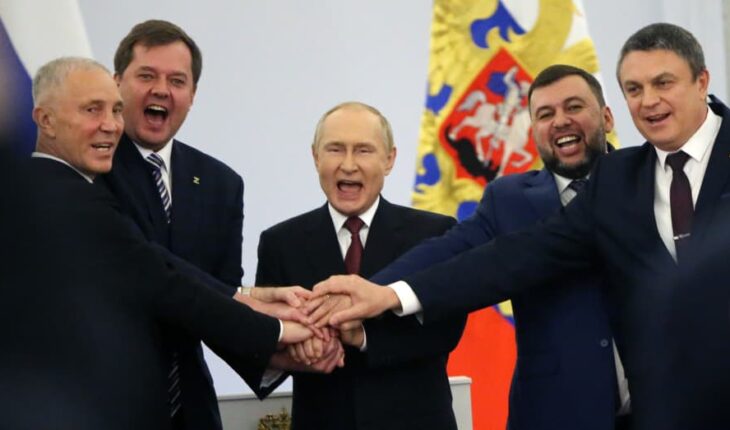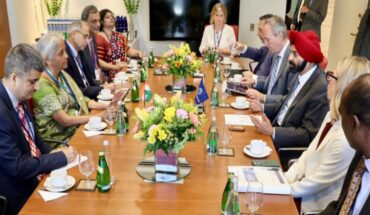Vladimir Putin has formally signed a treaty annexing four Ukrainian regions into the Russian Federation. The Russian president announced, at a ceremony in Moscow’s Red Square, that the incorporation of Luhansk, Donetsk, Zaporizhzhia and Kherson, in the south and east of Ukraine, into Russia is the choice of millions of people who share a common history with the Russian Federation.
We call on the Kyiv regime to immediately end hostilities, end the war that they unleashed back in 2014 and return to the negotiating table. We are ready for this, Putin said. But we will not discuss the choice of the people in Donetsk, Luhansk, Zaporizhzhia and Kherson. That has been made. Russia will not betray them.
What the Russian president didn’t make clear was exactly what these newly minted so-called Russian regions actually represent. Putin recognised breakaway republics in Luhansk and Donetsk in the Donbas region in February, the day before he launched the all-out invasion of Ukraine. But the republics covered only part of the oblasts or regions these names refer to.
Currently, fierce fighting continues across all four annexed regions, including around Zaporizhzhia, the location of Europe’s largest nuclear power plant. It is thought that the land grab represents about 40,000 square miles, or about 15% of Ukraine’s territory.
It has been reported that Russian forces had shelled a civilian convoy in Zaporizhzhia, killing 25 people. Moscow has attempted to blame Kyiv for this. There is also heavy fighting around the key town of Lyman in the Donetsk region, where Ukrainian forces are reported to be close to encircling a large number of Russian troops.
Putin said the citizens of the four occupied regions will be part of Russia for ever . He blamed the west for wanting to colonise Russia and its people.
But he said as he has repeatedly in recent weeks that Russia would defend the territories with all the forces and means at our disposal . This has widely been interpreted as a threat to use strategic nuclear weapons if Ukraine continues to pursue its counteroffensives in the occupied regions.
Ukraine war: Putin announces annexation of four regions, but his hold on them may be flimsy
Published Date: 01-10-2022 | 11:55 am


